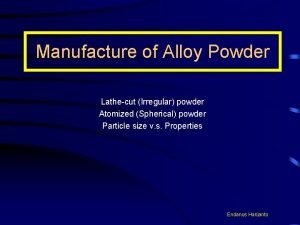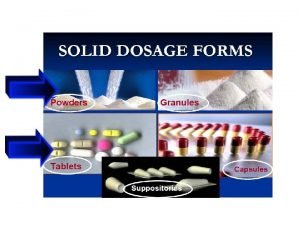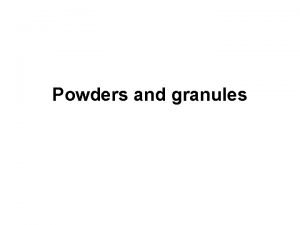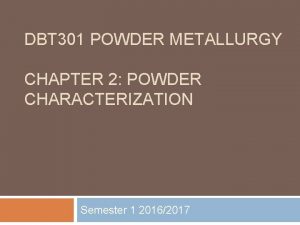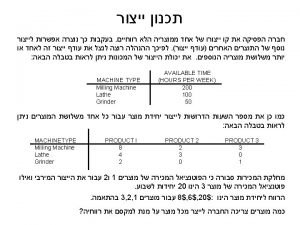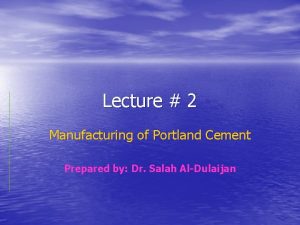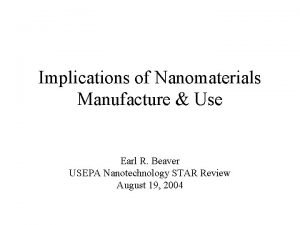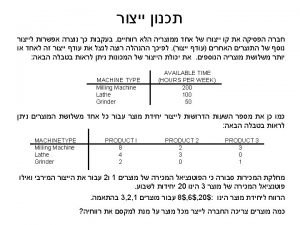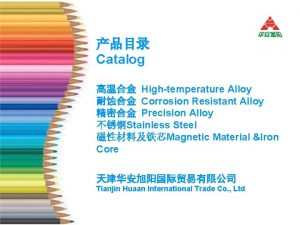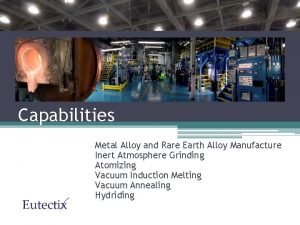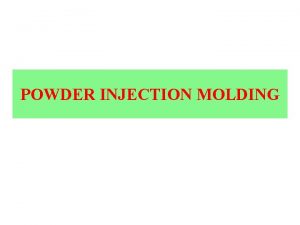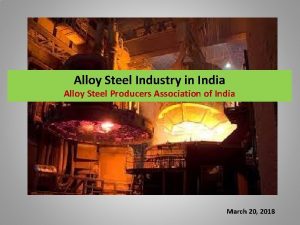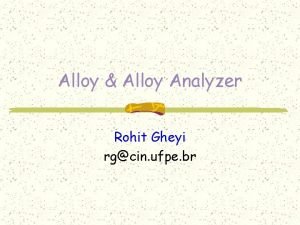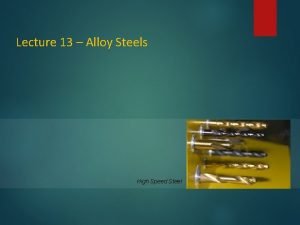Manufacture of Alloy Powder Lathecut Irregular powder Atomized









- Slides: 9

Manufacture of Alloy Powder Lathe-cut (Irregular) powder Atomized (Spherical) powder Particle size v. s. Properties Endanus Harijanto

Lathe-cut (Irregular) Powder • Metal ingredients heated poured into a mold ingot (Ag 3 Sn (g) + some b, e, h) • Ingot homogenizing anneal • An annealed ingot of alloy is place in a machine and is fed into a cutting tool. • 60 -120 µm in length, 10 -70 µm in width

Atomized (Spherical) Powder • Made by melting the desired elements together • The liquid metal is atomized into fine spherical droplets of metal by being sprayed under high pressure of an inert gas. • “Spherical powders” 2 - 43 µm • Also have heat treatment and are usually washed with acid.

Homogenizing Anneal • The ingot is placed in an oven and heated at a temperature below the solidus (at 400°C) for sufficient time (6 -8 hours) to allow diffusion of the atoms to occur and the phases to reach equilibrium.

Particle Treatments • Acid-washed amalgam powders – tend to be more reactive. • Stress-relief process after particle cutting – annealing cycle at ~ 100°C for several hours – “aging process”

Lathe-cut v. s. Atomized alloys • Lathe-cut or admixed powders resist condensation better than spherical powders. • Spherical alloys require less mercury than typical lathe-cut alloys because of the smaller surface area per volume. – Amalgams with a low mercury content generally have better properties.

Particle Size • A powder containing tiny particles requires a greater amount of mercury to form an acceptable amalgam. • A small-to-average particle size a more rapid hardening and a greater early strength • Particle size distribution can affect the character of the finished surface. – The larger particles may be pulled out during carving a rough surface corrosion

Amalgam Alloy Composition • ANSI/ADA Spec. #1 (ISO 1559) requires that amalgam alloys be predominantly silver (Ag) and tin (Sn). • containing Zn > 0. 01% “Zinc Containing” • containing Zn < 0. 01% “nonzinc”

Classification • Low-copper (Conventional) amalgam alloy (at least 65 wt% Ag, 29 wt% Sn, < 6 wt% Cu) – lathe-cut (irregular) powder or spherical particles or mixed – Ag-Sn • High-copper amalgam alloy (6 -60 wt% Cu) 90% of the dental amalgams currently placed – (1) Admixed (Ag-Sn + Ag-Cu) • A mixture of irregular and spherical particles of different or same composition – (2) Unicomposition or Single composition (Ag-Sn. Cu) • All spherical particles
 Spherical vs lathe cut amalgam
Spherical vs lathe cut amalgam Difference between bulk powder and divided powder
Difference between bulk powder and divided powder Bulk powders and divided powders
Bulk powders and divided powders Granules advantages and disadvantages
Granules advantages and disadvantages Powder characterization in powder metallurgy
Powder characterization in powder metallurgy A firm is planning to manufacture a new product
A firm is planning to manufacture a new product Manufacture of portland cement
Manufacture of portland cement Earl beaver
Earl beaver Cambridge technicals level 3 engineering
Cambridge technicals level 3 engineering Example of production plan
Example of production plan
